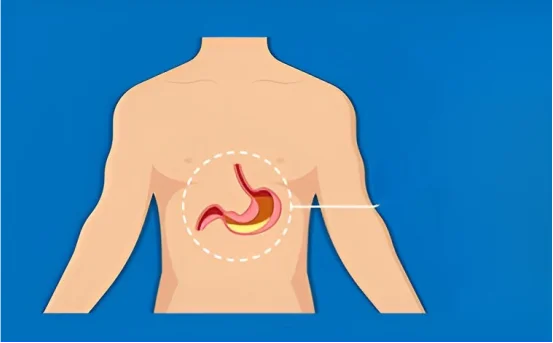The human hand is an incredibly complex structure composed of bones, muscles, tendons, ligaments, nerves, and blood vessels, all working together to allow precision, strength, and coordination. When one or more of these components are damaged due to injury, illness, or congenital conditions, surgical intervention may be required to restore function, relieve pain, or correct deformity.
Hand surgery is a specialized branch of medicine that involves a wide range of procedures designed to treat various conditions affecting the fingers, hand, wrist, and sometimes the forearm. If you or a loved one is preparing for hand surgery, understanding the procedure can help ease anxiety and prepare you for what to expect before, during, and after the operation.
What Is Hand Surgery?
Hand surgery is a set of surgical techniques used to treat medical issues involving the hand, including trauma, arthritis, nerve compression, tumors, infections, and congenital abnormalities. Surgeons who perform hand surgeries often come from backgrounds in orthopedic surgery, plastic surgery, or general surgery, and many undergo additional fellowship training focused specifically on the hand and upper extremity.
Procedures can be minor, performed under local anesthesia in an outpatient setting, or complex, requiring general anesthesia and extended recovery. Despite the wide variation, the basic structure of a hand surgery procedure remains similar across most cases.
Preoperative Preparation
The first step before surgery is evaluation and diagnosis. The surgeon will take a thorough medical history and perform a detailed physical examination of your hand. Imaging tests such as X-rays, MRI scans, or ultrasounds may be ordered to better understand the internal structures and the extent of the damage.
Once surgery is deemed necessary, patients are advised to prepare in several ways:
- Stop smoking if applicable, as it affects blood circulation and healing.
- Review current medications with the surgical team, especially blood thinners or medications affecting the immune system.
- Arrange for time off work and daily assistance, since one hand may be immobilized for several days or weeks.
- Fast if general anesthesia is planned (typically no food or drink 6–8 hours prior).
The surgeon will also explain the details of the specific procedure, including risks, benefits, and recovery expectations. Informed consent is obtained before proceeding.
Types of Anesthesia
The type of anesthesia used during hand surgery depends on the complexity and duration of the procedure. Common options include:
- Local Anesthesia :- Only the specific area of the hand is numbed; often used for minor procedures like cyst removal.
- Regional Anesthesia (Nerve Block) :- The entire arm is numbed by injecting anesthetic near the nerves in the upper arm or shoulder.
- General Anesthesia :- The patient is fully unconscious; used in more extensive or lengthy surgeries.
In many cases, patients undergoing regional anesthesia remain awake but may be given a sedative to stay relaxed.
Hand Surgery Procedure
Though different procedures are used for various hand conditions, most hand surgeries follow a basic sequence. Here’s a breakdown of what typically happens during a standard surgical process:
Incision
The surgeon begins by making an incision over the affected area. The size and location of the incision depend on the condition being treated. For example, in carpal tunnel release, the incision is made on the palm or wrist; in a tendon repair, the incision may follow the length of a finger.
Surgeons carefully plan the incision along natural skin creases or hidden areas to minimize visible scarring.
Exposure and Exploration
Once the incision is made, the surgeon gently separates the layers of skin and tissue to expose the damaged structures—be it bone, tendon, nerve, or joint. Special care is taken to preserve blood vessels and nerves that pass through the surgical area.
This step is critical in identifying the exact issue and ensuring all damaged or diseased tissue is addressed.
Repair or Reconstruction
The main surgical repair is then carried out. This varies widely depending on the underlying condition:
- Fracture Fixation :- Broken bones are aligned and stabilized with plates, screws, pins, or wires.
- Tendon Repair :- Torn tendons are stitched back together using specialized suturing techniques.
- Nerve Repair :- Severed nerves may be stitched directly or repaired using a graft from another part of the body.
- Joint Fusion or Replacement :- Damaged joints, especially in arthritic hands, are fused or replaced to relieve pain and restore stability.
- Tumor Removal :- Non-cancerous or cancerous growths are excised, sometimes requiring removal of surrounding tissue.
- Decompression :- In nerve compression syndromes like carpal tunnel, pressure is relieved by cutting the ligament pressing on the nerve.
Microsurgical instruments and magnifying devices are often used for precise work, especially when dealing with tiny nerves or blood vessels.
Closure
Once the repair is complete, the surgical area is thoroughly cleaned and inspected. Bleeding is controlled, and the tissue layers are closed in multiple stages with sutures. In some cases, absorbable stitches are used, while others may require suture removal after 10–14 days.
If the surgery involved extensive reconstruction, small drainage tubes may be placed to remove excess fluid and reduce swelling.
Bandaging and Immobilization
After closure, the hand is dressed with sterile bandages. Depending on the type of surgery, the hand may also be immobilized with a splint or cast. This helps keep the area stable during the initial healing phase and prevents accidental movements that could disrupt the repair.
Postoperative Recovery
Recovery begins immediately after surgery and plays a crucial role in the final outcome.
Pain and Swelling
Pain is common in the first few days but is typically well-controlled with prescribed medications. Elevation of the hand above heart level is recommended to reduce swelling. Ice packs may also be used, if approved by the surgeon.
Activity Restrictions
You will be instructed to avoid using the affected hand for lifting, gripping, or any strenuous activity until cleared. Even basic tasks like writing, driving, or buttoning clothing may need assistance.
Follow-Up Visits
Your first follow-up appointment is usually scheduled within 1–2 weeks. At this visit, your surgeon will assess the healing progress, remove sutures if necessary, and discuss the next steps.
Hand Therapy
In many cases, hand surgery is followed by a course of occupational therapy or physical therapy. A licensed hand therapist guides patients through exercises that improve:
- Range of motion
- Grip strength
- Finger dexterity
- Swelling management
Early and consistent therapy helps prevent stiffness, re-injury, or formation of scar tissue.
Potential Complications
Although hand surgery is generally safe, like any surgery, it carries risks. These include:
- Infection at the incision site
- Delayed wound healing
- Nerve damage resulting in numbness or weakness
- Excessive scarring or keloid formation
- Joint stiffness or reduced mobility
- Blood clots or hematoma formation
Prompt reporting of any unusual symptoms — such as fever, severe pain, or swelling — is vital for early intervention.
Conclusion
Hand surgery can significantly improve a person’s quality of life by restoring movement, reducing pain, and correcting deformities. Whether you are dealing with the aftermath of an injury, struggling with arthritis, or facing a congenital condition, a well-performed hand surgery procedure—followed by proper rehabilitation—can help you regain independence and functionality.
Understanding what happens during the surgical process empowers patients to ask the right questions, set realistic expectations, and actively participate in their recovery journey. If you’re considering hand surgery, consult a board-certified surgeon who specializes in hand procedures to discuss your options in detail.























